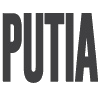It's hard to find something that represents Sicily, its history and its complex identity, better than the Trinacria.
This symbol of ancient origin, to some extent still shrouded in mystery, is in fact the result of so many influences that it's the perfect representation of a land that built its own identity on being the crossroads of different cultures and traditions.
 "Trinacria" is quite a recent name if we consider the history of the symbol from which it came, the so-called "triskele": a sign made of three spirals converging in the same central point.
"Trinacria" is quite a recent name if we consider the history of the symbol from which it came, the so-called "triskele": a sign made of three spirals converging in the same central point.
The triskele was used by a large number of ancient populations, European as well as Eastern, and had a strong religious and exoteric character, often associated with the sun.
We don't know for sure how the trinacria - or the triskele - arrived in Sicily. The Greeks were certainly among the populations who used it, but there are traces of its presence on the island well before their arrival.
However, we know that the name trinacria comes from the Greek word Trikeles and the Latin word Triquetra. The former means three capes and refers to the Peloro, the Passero and the Lilibero, the three Sicilian capes. The latter means three vertices. Both names are a clear reference to the island's triangle shape, which is the main reason behind the geographical association between Trinacria and Sicily, that will become stronger and stronger, turning in time into a true reciprocal identification.
 What's the meaning of the trinacria today? How many different influences did the symbol take and make its own through its long history?
What's the meaning of the trinacria today? How many different influences did the symbol take and make its own through its long history?
At the beginning, the symbol was simply formed by three legs connected to a central point. The head appeared only later and came from a Greek symbol called gorgoneion, which represented one go the Gorgons (Medusa, the most famous one), considered a lucky charm. The snakes on the head came on the other hand from an old Sicilian tradition that valued them as a symbol of prudence and wisdom.
Sprouting from the head we also have three grain ears which are traditionally associated with Sicily's fertility, while the two wings are a symbol of the eternity of time.
 The trinacria was "adopted" by the Sicilian Parliament in 2000 and is found at the center of the flag on a red-and-yellow-coloured background. The colours are a tribute to Palermo (red) and Corleone (yellow), the first two cities to rebel during the Sicilian Vespers in 1282. This same episode also represents the first time the Sicilian flag with the trinacria appeared.
The trinacria was "adopted" by the Sicilian Parliament in 2000 and is found at the center of the flag on a red-and-yellow-coloured background. The colours are a tribute to Palermo (red) and Corleone (yellow), the first two cities to rebel during the Sicilian Vespers in 1282. This same episode also represents the first time the Sicilian flag with the trinacria appeared.
Today, the trinacria has mostly lost its religious meaning, but it's still popular as a lucky charm. This - also thanks to its natural association with Sicilian identity - has made it an endless source of inspiration for talented Sicilian artisans, who choose it to tell a story about their own land.
The strength of this symbol, its ability to renew and re-propose itself in a new and yet still traditional way, is one of the reasons why it's such an important part of Sicilian identity and heritage, a perfect sum of Sicily's ability to absorb from the most diverse sources and to create something that feels genuinely "Sicilian".

